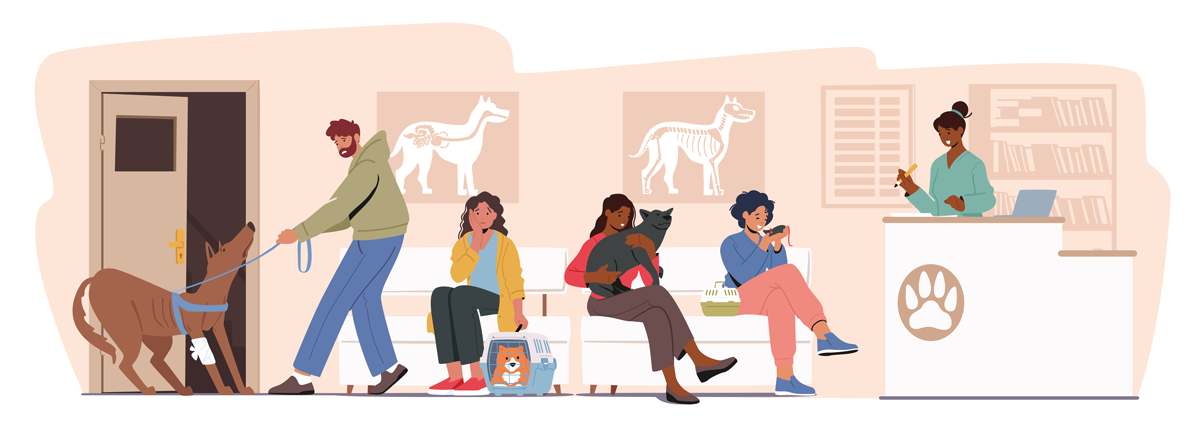Whether it’s when rushing through the veterinary practice door, or via a telephone call for help, receptionists are the first line of contact when dealing with a veterinary emergency.
As vets and nurses, part of our training includes first aid and emergency care. This gives us a good understanding and the confidence to deal with an emergency presented to us. With that said, even some newly qualified or less experienced staff still have apprehension when it comes to these high-pressure situations.
First contact
Many receptionists are not trained in animal first aid, nor are they confident handling a presented emergency, although they are usually the first in line to deal with it.
In some cases, receptionists may not even be able to determine if something is actually an emergency, or what help to suggest. I believe a good way to tackle this is with suitable training. Just as workplaces provide human first aid training courses, there are animal-specific first aid courses available and directed at those working within animal professions – but not necessarily the clinical/medical side of things.
I previously carried out said training while working as a dog walker, and strongly believe it should be carried out by all those working with animals – from those offering non-clinical animal-related services, like groomers, to our own receptionist teams.
Many of these courses are online, inexpensive and provide a good depth of knowledge of the basics and most common cases seen. Given the veterinary industry has a large variety of advanced situations, this course could help provide the knowledge for receptionists to feel more confident in their role.
The essential art of triage
Triaging is important as this can be the line between the life and death of a patient. Triaging delegates the order in which injured/sick animals are seen, with the most life-threatening seen first, through to the least life-threatening.
I will admit that even I have found this difficult to determine on occasion, therefore those who are not vets or nurses may well struggle.
Unless a dog comes into practice spurting blood over the ceiling, less obvious problems might seem as though they can wait, yet can be just as life-threatening. Flow charts within reception can be a good guide for the team to depict if a situation should be seen or can wait.

In a busy veterinary practice, it’s not always easy to recognise what is, and what isn’t, an emergency. Image © lemono / Depositphotos.com
The ‘bloody‘ obvious
Problems to be seen immediately and easier to determine as an emergency can include the “obvious” cases such as collapse, road traffic accidents (RTAs) and bleeding wounds/post-operative wounds.
Less obvious cases still within this immediate bracket include some seizure activity, male cats not urinating, unproductive retching alongside a bloated stomach (which can be signs of a gastric dilation volvulus), not to mention the ingestion of toxic foods.
On this point, I think both common and lesser-known toxic foods should be taught to staff and owners (where possible/applicable), these include garlic, onions, grapes and medications – especially household medications like paracetamol, which is highly toxic to cats.
While chocolate is commonly recognised as toxic to animals, other harmful products may be less recognised, so veterinary receptionists should be able to advise owners of this and take note if mentioned over the phone.
Of lesser urgency
On the other hand, there are several issues that do not require urgent treatment, yet can easily be mistaken for an emergency and take up a much-needed emergency appointment.
These include cases of vomiting, inappetence for prolonged periods, blood in faeces, ulcerate lumps or eye issues – all of which, of course, need to be seen quickly, but should be triaged correctly to avoid taking up an emergency slot over a case requiring immediate attention.
In the event of an emergency presented in the clinic such as shock, collapse or RTA, perhaps requiring CPR, receptionists should have a protocol in place to inform the clinical team, and the confidence to transport and start CPR in a suitable environment such as the prep area, where all team members can get involved.
Conclusion
Although emergencies can seem daunting, team members should be supportive of each other, encourage learning and discuss cases as a method of improving.
This can also raise morale, especially when working in a demanding environment.

Leave a Reply